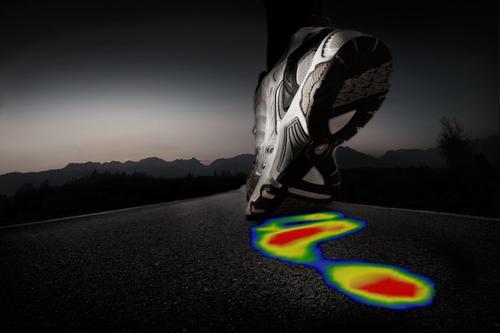Capacitive Tactile Sensors Solve Myriad Challenges
November 18, 2013

One of the main strengths of capacitive tactile sensing technology is its ability to help people access information that would otherwise be impossible to capture. Consider, for example, a sensor-equipped motility catheter that can create a high-resolution pressure map detailing the functionality of a person's esophagus from within. Of course, optimizing such powerful technology often requires a certain level of expertise and experience and can be more complicated than might first be apparent. To put it bluntly, it's not as simple as slapping some sensors on a product and calling it a day, a fact illustrated by the complexity of integrating tactile sensors into sports gear.
Sports inspire both passion and an endless thirst for information in the people who participate in them, from golfers who want to analyze and perfect their game to runners who want to track their performance in precise detail. While capacitive tactile sensors have the potential to help quench that thirst, the challenges of capitalizing on that potential -- specifically as it pertains to golf clubs and athletic footwear -- show just how many factors can be involved in properly utilizing such sophisticated technology.

Tactile sensors and sports have proven a successful match in research settings, with the technology capable of measuring such difficult-to-quantify factors as the speed with which someone can catch and shoot a basketball or the deftness with which a receiver can catch a football. Of course, such applications often require the use of complicated and costly equipment and can yield data that is difficult to interpret.
Similarly, it's possible to embed sensors in the handle of a golf club that could capture high-resolution pressure data relating to a person's swing. However, a set of barriers that might not be obvious at first glance keeps this technology from being made available to consumers. First, the sheer amount and complexity of the data measured by the club handle would overwhelm most golfers, who wouldn't know how to distill it into something useful. Second, the cost would likely be prohibitive for individual consumers. Even if, say, the price point were lowered with the intent of selling it to practice ranges for the purpose of coaching or teaching on a wider scale, there likely would not be sufficient volume to justify a market.
Thus, tactile sensing in golf is currently limited to rather simple applications, such as gloves that measure pressure in a comparatively imprecise manner -- though these are more like gadgets than standard tools that everyone uses. Other sensing technologies, such as radar and lasers for ball tracking, have successfully made an impact in the golf world, but these are not as dependent on the human element, which introduces a certain level of difficulty and variability, as capacitive tactile sensors are.
However, technology is becoming ever more accessible. With smartphones becoming more powerful and Bluetooth technology becoming easier to implement, and with the continued miniaturization of electronics, we're sure to see tactile sensors making a real impact in sports soon -- as indicated by the advancements being made in wearable sensors used in athletic footwear.
The available technology in this product category merely scratches the surface of what's possible. Nike makes a shoe, marketed to basketball players as a method for tracking hang-time, that uses pressure sensors in the insole to measure contact lift-off data, though these are really just pressure switches. More sophisticated solutions are on the horizon. Tactile sensors that provide data about other key performance parameters -- such as balance and power -- are on the verge of being commercialized.
Implementing such technology also carries its fair share of challenges. One of the biggest hurdles is accounting for the amount of deformation or stretching an athletic shoe might undergo. These are not, of course, industrial applications in which everything is mounted and controlled. Also, a sensor that works in a running shoe, for example, might not work in a shoe worn for racquetball, which involves the sorts of sheer forces that might cause damage. Using a more durable rigid force sensor, however, would be impractical, as it would be uncomfortable for the person wearing it.
The limitations and possibilities for sensing technology in both golf and athletic footwear serve to reinforce the sky-high potential of capacitive tactile sensors and also the importance of anticipating and being intimately familiar with the multiple facets of working with them. Exciting ideas are often fun to consider, but developing a truly useful solution requires the right combination of interest, design, available technology, and, perhaps most important, know-how.
Related posts:
About the Author(s)
You May Also Like



